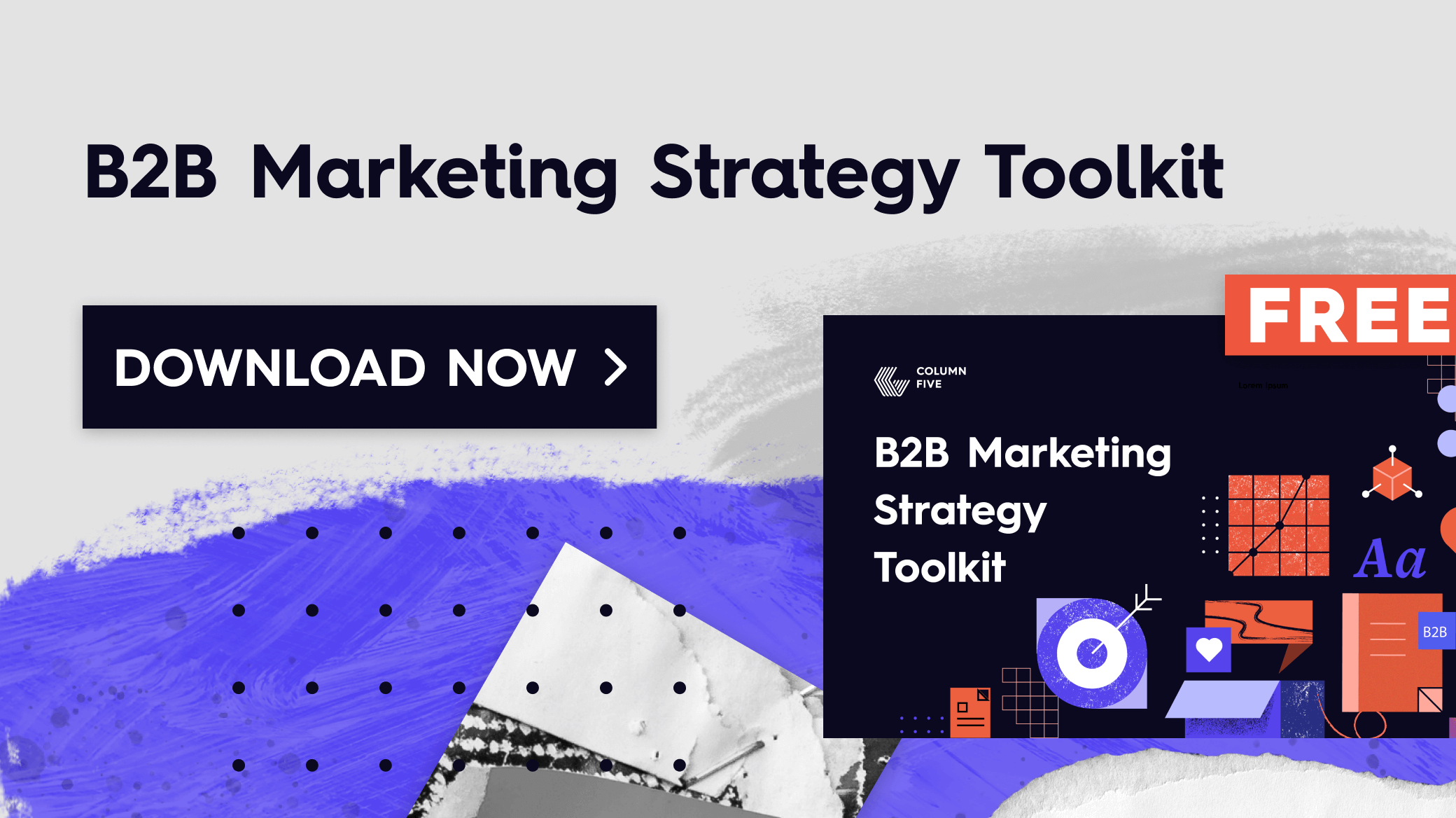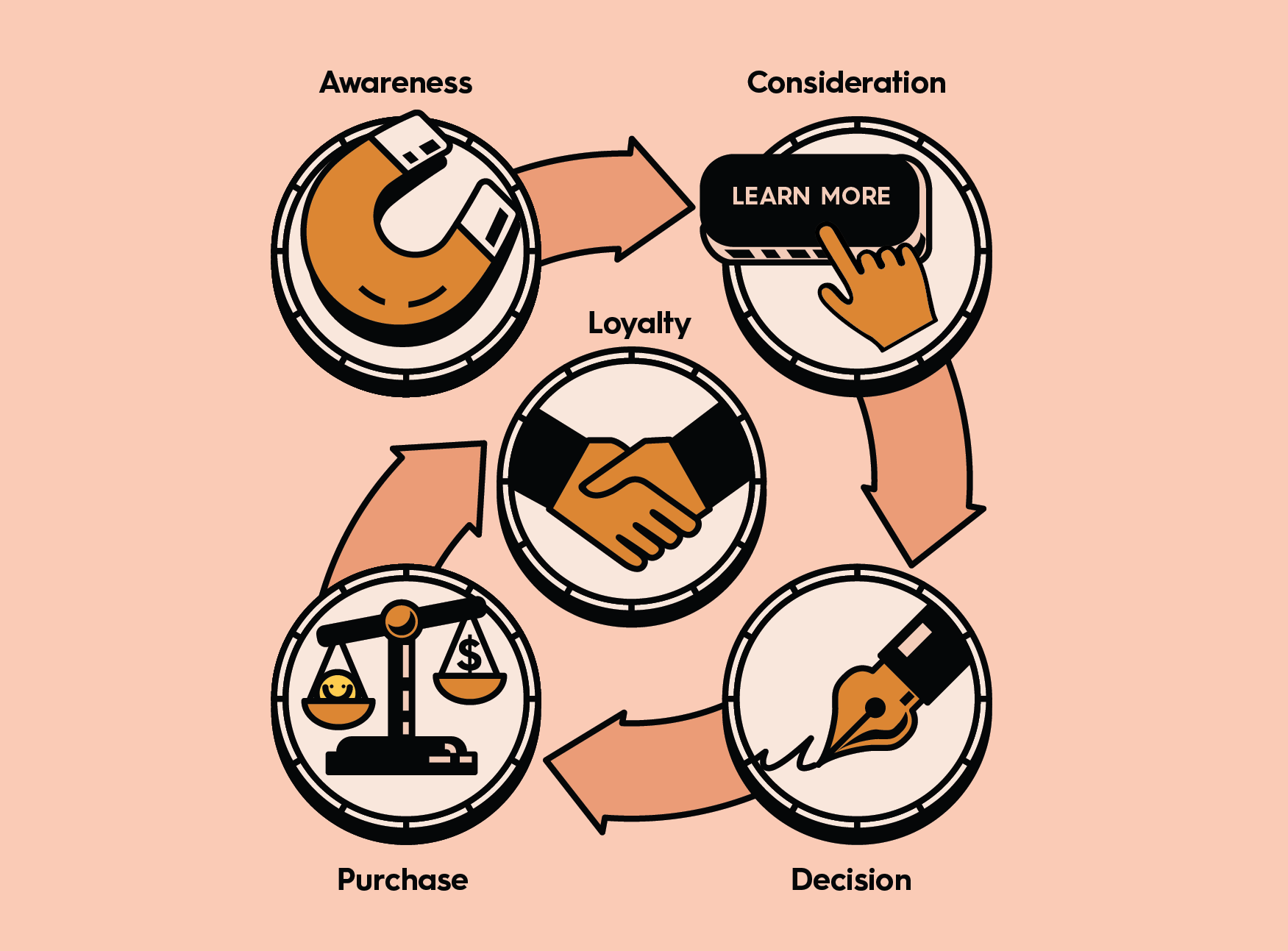B2B buying behavior is always evolving, but the last two years have notably influenced people’s needs, wants, and behaviors. As the Pandemic pushed the world online (and the lines between B2C and B2B continue to blur), B2B buyers’ expectations have drastically changed. And while change is scary, savvy marketers know that it can also present huge opportunities for growth—if you can effectively adapt.
Today, we’re breaking down four key trends that are influencing buyer behavior (based on fresh research) to help you understand what you can do to win more customers now—and in the future.

Trend 1: E-commerce is the # 1 way to buy.
According to the Sana 2022 B2B Buyer Report, B2B buyers far prefer to buy online—a significant change that has taken place since the Pandemic. Whereas phone, email, and sales reps have traditionally been the most preferred channels, the shift to digital has overtaken both B2C and B2B. This change has also been fueled by younger generations, who are more skeptical of salespeople and more eager to complete purchases independently. As more Millennials assume B2B-buying roles, this trend will only continue.
“…Suppliers who previously felt that their product was too complex or expensive to be bought through a web store now need to be able to deliver complicated product offerings online.”
—Sana 2022 B2B Buyer Report
How marketers can adjust:
- Create a comprehensive website. During the Pandemic, many businesses rushed to create digital storefronts using basic templates and functionality. According to Sana, 50% of e-commerce sites are not fully meeting B2B buyers’ expectations. Ensure you are giving buyers the ability to do everything with ease, including purchase, track orders, view order history, etc.
- Create a clear path. Beyond the functionality of your website, you need to create a streamlined path for your audience. Is your site easy to navigate? Are your social channels optimized for conversion? Make your audience do as little work as possible to get the information they need.
Trend 2: Buyers want rich virtual buying experiences.
Because buyers want to complete purchases online, they are often moving through the funnel alone–without a sales rep to spoonfeed information. To make the path to purchase as easy and engaging as possible, marketers need to create rich experiences through content.
Put yourself in your customers’ shoes, and think about what they might want/need at every stage of the buying process. How can you provide this information—or even delight them while doing it? We live in an era where marketers have more tools under their belt than ever, so think about how your brand can enhance the experience through things like interactive demos, virtual reality, tools, quizzes, etc.
“The best work in digital selling is not happening within sales departments but rather in marketing.”
—5 Ways the Future of B2B Buying Will Rewrite the Rules of Effective Selling (Gartner)
How marketers can adjust:
- Map your buyer journey. To get a detailed understanding of your audience’s needs at every stage, use our templates to map your buyer journey, identify the right messaging, and bring that messaging to life through a rich mix of content.
- Conduct a content audit. Assess your existing content to identify areas to fill in gaps, reinforce messaging, or enhance the experience at every touchpoint.
- Use the right format. There are all sorts of ways to connect with your buyer. Try these ways to connect with your audience and deliver the information they want.
Trend 3: Buyers have less need for salespeople—in traditional roles.
Whereas sales reps have traditionally been the source of information throughout the buying process, with the proliferation of content, buyers are much more empowered to gather information and complete purchases on their own. And although B2B buyers increasingly prefer to complete purchases without sales reps, sales reps still play an important role in the process.
“We are witnessing a decided end to the era where sales reps were the channel; now they are merely a channel to customers.”
—5 Ways the Future of B2B Buying Will Rewrite the Rules of Effective Selling (Gartner)
Because B2B buyers feel an enormous amount of pressure to make the right decision (as B2B purchases are much larger and more costly), and there are more decision-makers involved, sales reps play an important role in helping buyers navigate the wealth of information that exists (both from their own brands and competitors), choose the best product/service for their unique needs, instill confidence (or field questions from other stakeholders), and act as a trusted guide to support buyers at every stage.
How marketers can adjust:
- Help sales create content that clarifies—not conflicts. Content shock is real, and buyers are easily paralyzed. The more you can provide context and comparison to what your competitors may be pushing, the easier it will be for your buyer to make a decision. Find out more about how to create effective sales content that empowers your team.
- Build relationships through content. According to Sana, 84% of B2B buyers would buy from a supplier who they had a great relationship with—even if the terms of business were less preferential. But a good relationship doesn’t just come from fact sheets and product features; it grows when people feel connected to a brand personally. Share your values, showcase your employees, and take people behind the scenes to break down walls and connect as humans.
Trend 4: Digital buying offers more opportunities for personalization.
Data has always been a marketer’s friend. As the buying process shifts online, we can gather more insight than ever into buyer behavior. That said, the ability to collect, synthesize, and turn this data into helpful insights is a huge challenge, as different tools are used at different points.
The most mature marketing organizations work to streamline their data and ensure their team knows what to do with it. Most importantly, the most successful marketers will use that data to create highly personalized experiences that move the buyer along the path to purchase.
How marketers can adjust:
- Know your audience. Create personas based on customer data to understand who your audience is, what they care about, and how you can help them.
- Tailor your messaging. Telling a consistent brand story—but making it personally relevant to every buyer—is the key to success. Use our brand messaging template to identify your key stories, then use these tips to make messaging as compelling as possible.
- Report. Turn those data points into regular reports to understand how well your messaging is connecting with people.
How to Master B2B Going Forward
While these trends can help marketers stay on top of their game, there are plenty of other ways to improve your B2B marketing operation.
- Start with a good foundation. If you want to succeed, you need a solid content strategy that includes clear, specific, and measurable goals. If you haven’t properly documented these (as only 40% of B2B marketers have), use our free content strategy toolkit to get it all on paper.
- Provide value. The more interesting and relevant your content is, the more people will want to engage with it. Use these questions to vet your ideas, and follow these tips to create B2B content that really converts.
- Publish the right mix of content. Find out how to properly curate your editorial calendar, and make sure you’re regularly creating these 5 core types of B2B content.
And if you need a partner to guide (or execute) any part of your strategy, bring in support. See our tips to find an agency with the right expertise, find out how to vet them, or start your search right here with us.
Most importantly, remember that B2B can be a long road. Be patient, keep experimenting, and keep the big picture in mind. The goal is always progress, not perfection.





